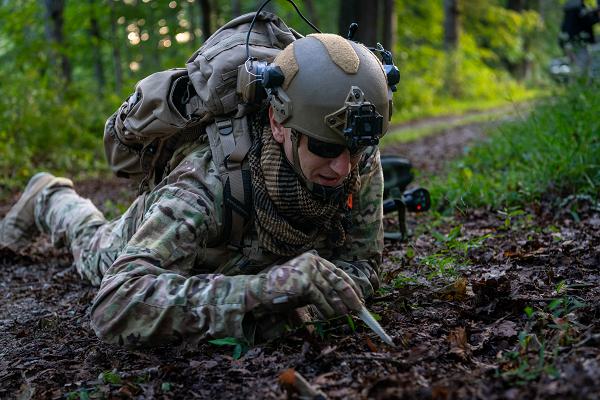
Muscatatuck Urban Training Center, Indiana. (September 19, 2024): There are many ways to detect and diffuse land mines, but sometimes a troop simply needs to get down and personal with these killers. In this photo by Jason Wilkinson, Technical Sergeant Clay Gorham, an explosive ordnance disposal technician from the 355th Civil Engineer Squadron Contingency, Exercise and Deployment, displays the oldest and most primitive method of disposing of explosive devices.
The tedious process, which dates to World War II, begins by carefully clearing debris around the device to determine what type of explosive it contains. Next, a knife blade is inserted at a thirty-degree angle into the ground around the mine to allow room to defuse the device. Any careless move spells instant death.
There are two main types of land mines, one to destroy tanks and armored vehicles and the other to kill humans. Anti-tank mines typically are larger and require more weight to set them off. Infantry troops will not likely trigger these devices.
Anti-personnel mines, on the other hand, are purposefully designed to maim or kill soldiers through either blast or fragmentation. Blast mines are buried close to the surface and can be triggered by the weight of a small child. A more devilish fragmentation variety is a “bouncing” mine that launches upward from the ground before detonating. Most of these killers are triggered by trip wires which makes the job even tougher.
In military situations, the placing and disposing of mines is the job of the Combat Engineer (also called Sappers or Pioneers) whose goal is to create a safe path for troops and equipment through a mine field. Often, they are called upon to perform the demining process described above while under direct fire. We will be featuring the role Combat Engineers in a future edition of Support Our Troops.


